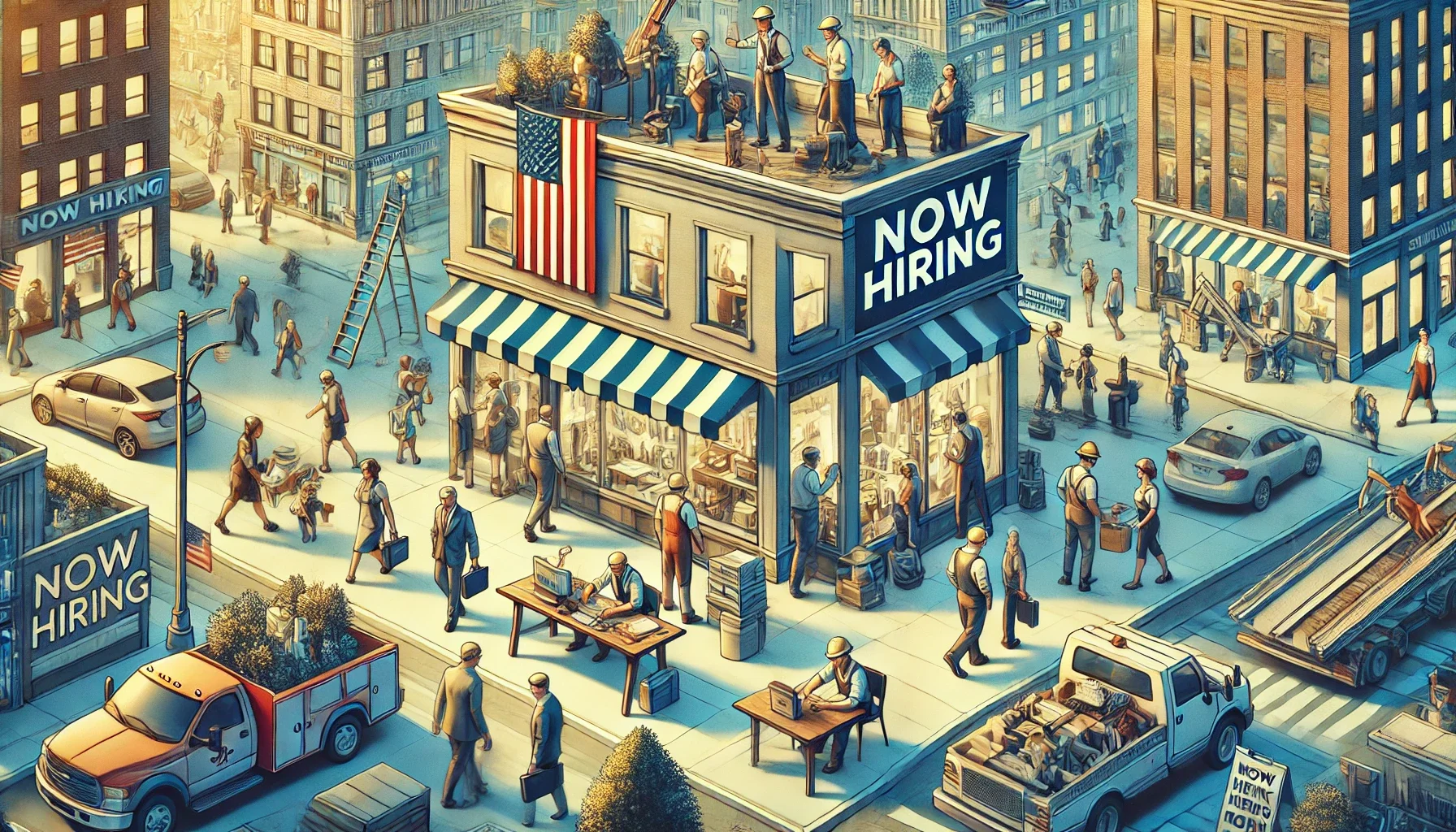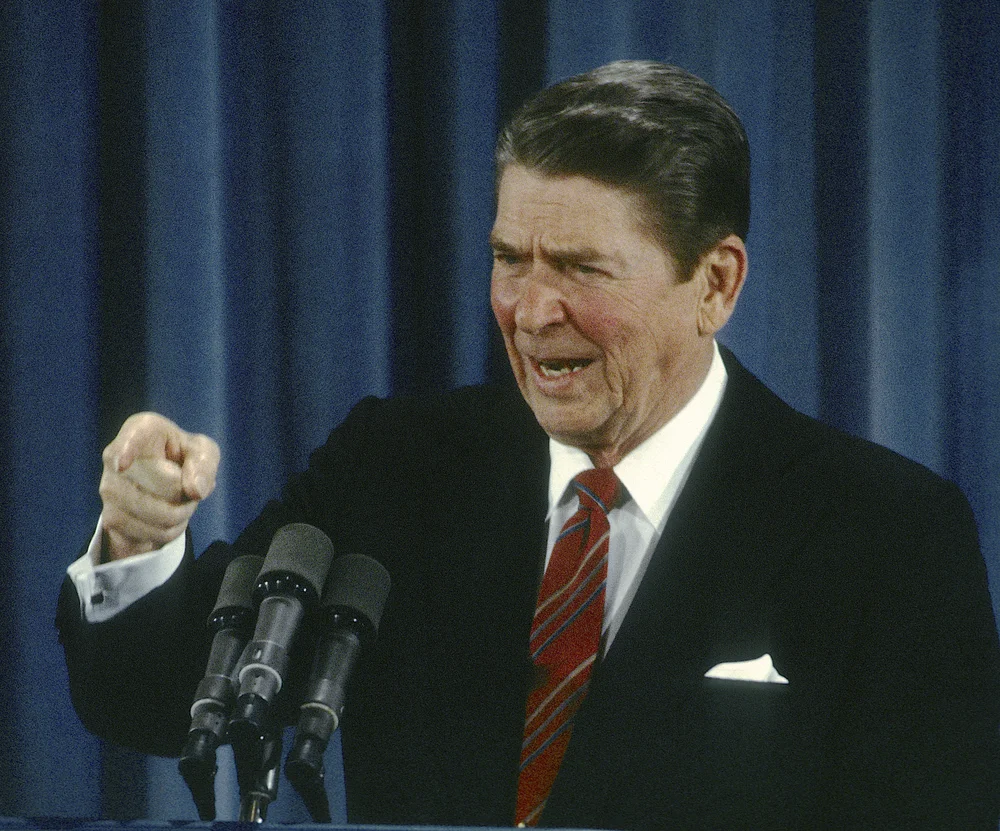.webp)
The New Supply Side Economics Can Revive Economic Growth
What might reform toward more free market economic institutions look like in the U.S. today?
Economic growth measured by GDP or GDP per capita has declined among advanced economies in the past few decades. Since the global financial crisis, GDP per capita has barely risen at all in Canada and Western Europe. It's been flat even longer in Japan. While productivity has also been slowly declining over time in the U.S., the U.S. is the rare exception in the developed world, which is still growing at some modest pace, with GDP per capita growth averaging around one to two percent in recent years.
Economic growth has been one of the greatest poverty-alleviating tools the world has known. But what causes growth? Technology and institutions are at the center of it. Innovation is shaped by incentives, which can easily be squandered by wrong policies and laws (or lack thereof). Why innovate if the state will likely expropriate your inventions? Or the state may make it impossible to innovate through government-subsidized monopolistic industries that squander any private-sector competition.
One needs to look no further than the GDP per capita of North Korea versus South Korea to see that institutions matter. They were previously one country (and one institutional structure) until the early 1950s when civil war tore the country apart. The North chose totalitarian communism and stayed poor, while the South chose relatively limited government capitalism and became prosperous.
This story alone is convincing that institutions matter a lot for growth. Daron Acemoglu, Simon Johnson, and James Robinson were awarded the Nobel Prize in Economics this year for their empirical work on institutions and illustrating why they are a crucial determinant in why nations are rich and poor, following the more theoretical work of past economists like Doug North.
Institutions matter for economic growth, but which institutions and why? Acemoglu and Robinson argue in their best-seller Why Nations Fail that inclusive institutions versus exclusive institutions decide whether a country is prosperous or not. Indeed, extractive institutions like slavery have substantially set nations back in terms of their development. It’s unclear, however, whether inclusive institutions like democracy cause growth (as Acemoglu and co-authors claim) rather than more simply providing important mechanisms for redistribution. In one paper, economists Guillermo Vuletin, Julia Ruiz Pozuelo, and Amy Slipowitz find no clear evidence that real GDP rises after democratic transitions. Max Miller's recent paper finds that a country's stock market declines after democratizing.
I would argue that the correct taxonomy is free market economic institutions versus illiberal economic institutions. We have many historical examples from "The Age of Milton Friedman" of extensive market reforms or ‘shock therapy.’ This includes Post-USSR Eastern Europe growing after the collapse of the USSR, Deng Xiaoping’s China market reforms in the 1980s, India under P. V. Narasimha Rao’s reforms of the 1990s, Chile after Augusto Pinochet, and now Javier Milei's Argentina are all examples of significant market-reforms that were followed by periods of growth.
But what might reform toward more free market economic institutions look like in the U.S. today? Take aim at regulation.
There's an excellent case to be made that regulation, particularly on firms, matters a lot. The World Bank Doing Business Index, which measures governmental barriers to firm entry and firm dynamics, correlates well with GDP per capita across countries. The U.S. scores well on this measure (while places like France do not, with its limitation on work hours and labor dynamics contributing to its poor score).
The regulatory low-hanging fruit in the U.S. today concerns deregulating work and housing markets. This might be called the "New Supply Side Economics."
Zoning and land use regulations contribute to the housing shortage and unaffordable high housing prices, particularly in coastal markets. From 2007 to 2018, land use regulations tightened, according to some of my research with Joe Gyourko and Jake Krimmel, published in the Journal of Urban Economics. Costly real estate in the most productive localities prevents people, mainly from poorer backgrounds, from moving to (or staying in) areas with greater opportunity. Relaxing land use constraints would be a major step in promoting economic activity. We may see some early gains from the so-called YIMBY movement, but it remains too early to tell.
Occupational licensing remains a massive problem in the U.S. Approximately one-third of the U.S. workforce has a license. Often, licenses skew toward poorer workers and cover jobs like hair braiding, which arguably do not need an onerous licensing process. Many states also need to recognize licenses from other states. That means that a nail tech from another state must take their licensing exams again, halting their ability to work immediately and causing further inefficiency. A small but growing number of states have started to pass universal licensing reciprocity agreements, beginning with Arizona in 2019.
Education remains a critical strategy to enhance productivity and long-term economic growth. Public schools systematically continue to fail children across the nation. Universal school vouchers, originally popularized by the late economist Milton Friedman, which offer parents a choice of where to spend educational dollars, were once viewed as a pipedream but are now sweeping many states, representing an opportunity to improve competition in schools and student outcomes. Arizona also became the first state in the nation to pass universal school voucher legislation in 2022; nearly a dozen states have since followed.
As countries worldwide experience slowing population growth, including the U.S., migration remains one of the best options for growing a highly skilled workforce. Removing barriers to skilled legal migration is low hanging fruit when adding talent to the workforce. Many barriers exist within the United States immigration system that favor family-based migration over skills-based migration. Country of origin rules make it especially difficult to obtain green cards for Indians, who find themselves in decades-long queues. Allocating green cards based on highly specialized STEM education backgrounds could further help to enhance the talent pipeline in the U.S.
To be sure, America, on the economic growth front, is doing much better than other advanced economies, but in part, this is because it leads the world in innovation, which is fueled by being able to attract the best talent from around the world. America has all the major technology companies and many of the most innovative pharma companies. Sure, technology companies exist outside the United States (Sweden has Spotify, and Canada has Shopify), but the innovation advantage is clear, and this depends on skilled talent. Research from Stanford Graduate School of Business Economics professor Rebecca Diamond and co-authors find in a recent paper that high-skilled immigrants in the U.S. are disproportionately productive and innovative in patenting.
Free market economic institutions such as those outlined above offer a new supply side economics roadmap for policymakers in both parties. To be sure, tax reform can also be part of a solution. However, with mounting debt issues on the horizon, the ability to cut taxes becomes limited, and a careful approach to tax reform that is balanced with cost-cutting is needed.
Reviving productivity growth in the U.S. and worldwide will take much effort. Many political barriers may stand in the way of the U.S. and the rest of the world. The appetite for consumer welfare-enhancing free trade agreements and legal immigration in America is thin. However, strengthening market-based economic institutions and taking market reforms seriously in a new supply side approach offers a serious strategy that should be considered by policymakers in America and around the world.
Jonathan Hartley is a senior fellow at the Foundation for Research on Equal Opportunity, a senior fellow at the Macdonald-Laurier Institute, and podcast host of Capitalism and Freedom in the 21st Century at the Hoover Institution.
Economic Dynamism

The American Dream Is Not a Coin Flip, and Wages Have Not Stagnated
This paper challenges the prevailing narrative that stagnant wages are causing the American dream to fade. It contrasts subjective public opinion with revised objective intergenerational mobility measures.

Political Economy and the Rise of Commercial Humanism
Western attitudes toward commerce have transformed from early moral condemnation to a modern appreciation that sees trade as socially beneficial.
.webp)
A Bad Business on the Bayou
Chevron finds itself the victim of a political alliance between the tort bar and Louisiana Republicans.
.webp)
Congress Must Shield US Companies from European Regulations
Congress should exercise its constitutional powers over foreign commerce to guard American companies against overregulation by the European Union.

Trade Protection and Tariffs from Reagan to Trump
Donald Trump's enthusiastic embrace of tariffs and protection for American industry appears to be a complete reversal of Reagan and Reagan-era policy.

Transatlantic Trade War Produces No Winners
The EU should end its competition policy vendetta. Trump should drop his tariffs.


_(7184104335).webp)

.webp)


.webp)



.webp)


